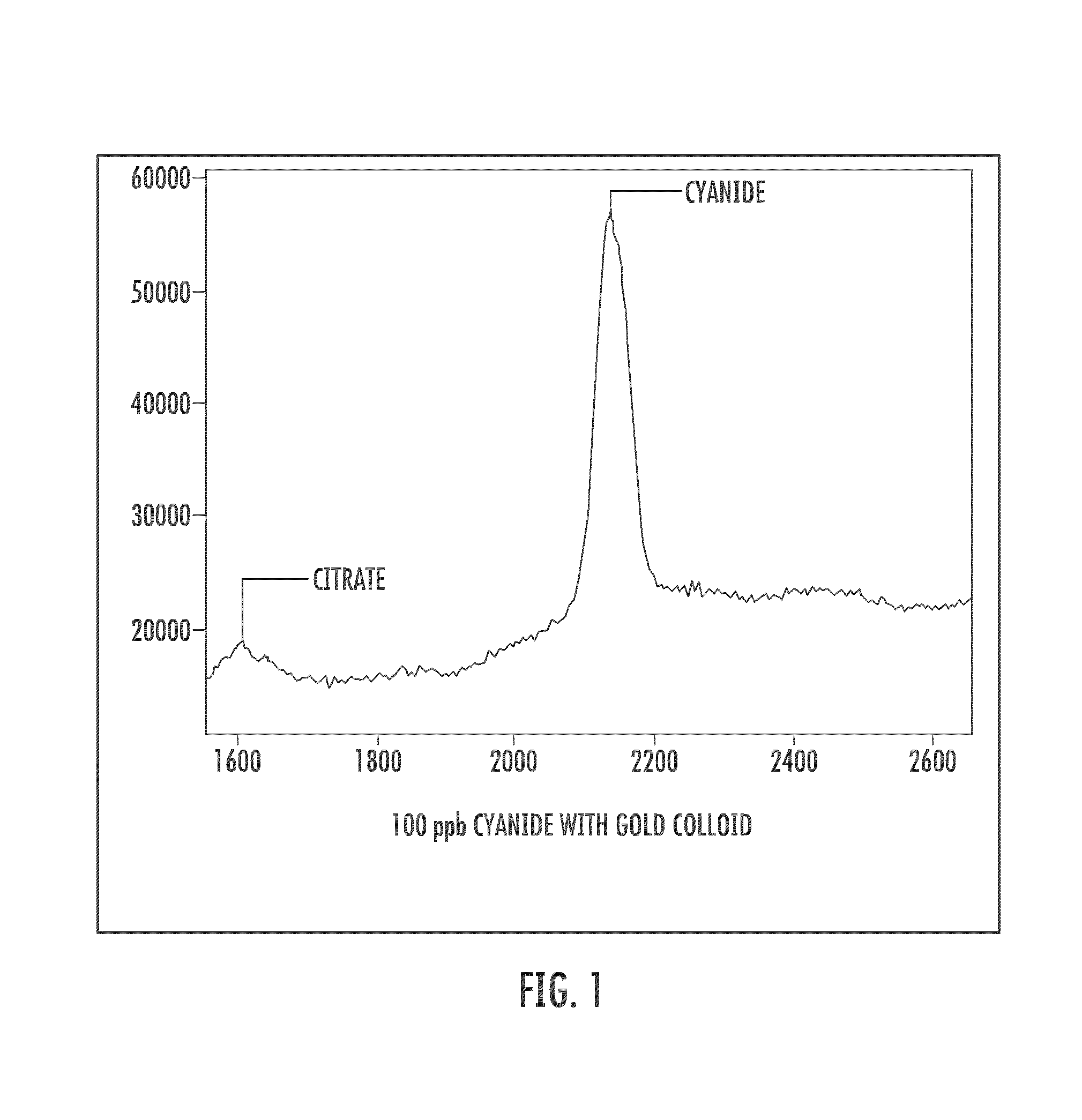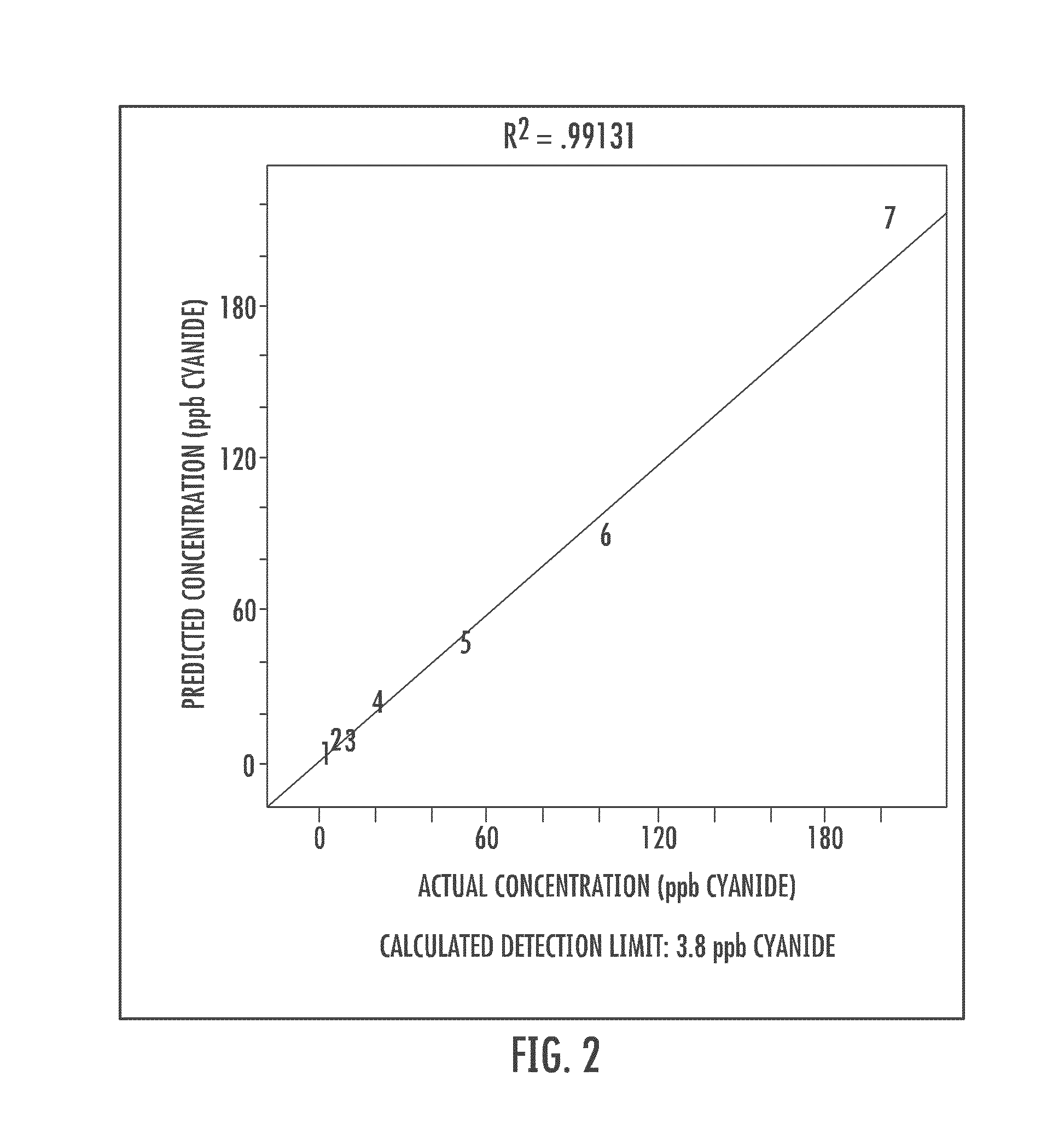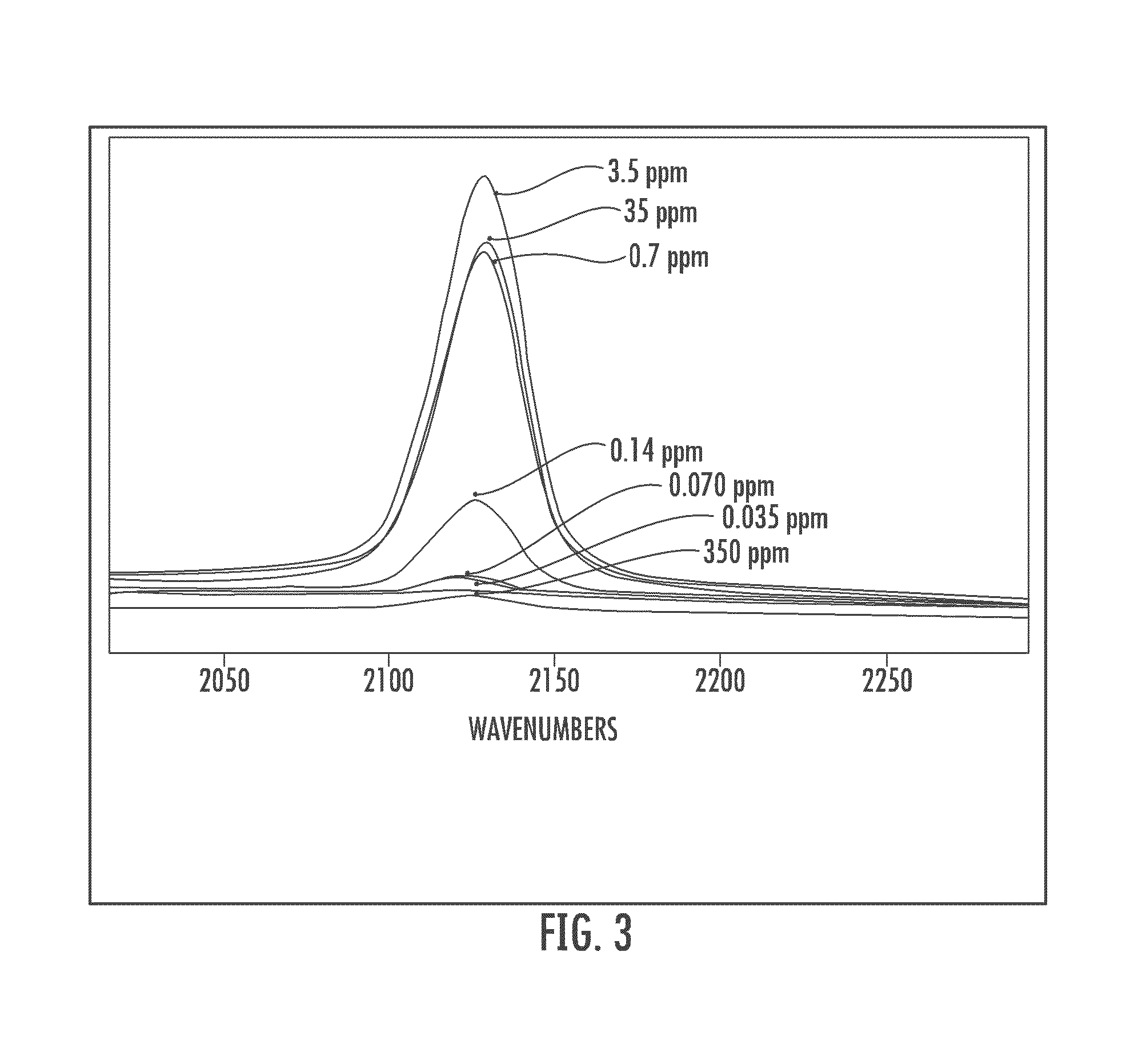Cyanide and related species detection with metal surfaces
a technology of metal surfaces and cyanide, which is applied in the field of detection and monitoring of chemicals, can solve the problems of no longer producing surface enhancement, and achieve the effects of improving the assay of a chemical and/or a species related, improving the signal, and strengthening the raman signal
- Summary
- Abstract
- Description
- Claims
- Application Information
AI Technical Summary
Benefits of technology
Problems solved by technology
Method used
Image
Examples
examples
[0074]1a) Preparation of Silver Colloids: Silver colloids were prepared by a modified procedure of Lee and Meisel (PC Lee; D Meisel, J. Phys. Chem., 1982, 86, 3391). Silver nitrate (90 mg) was added to a 1000 mL Erlenmeyer flask containing 500 mL distilled water. While stirring this solution was heated to boiling. A 10 mL aliquot of an aqueous sodium citrate (1%) was added. Boiling and stirring were continued for 30 minutes, during which time the solution changed color from transparent gold to opaque yellow greenish color. The flash was removed from the heat source and the solution allowed to cool while stirring. The volume was adjusted with distilled water to makeup for fluid loss during the heating process, typically 100 mL. The colloid suspension was store in a Nalgene container at room temperature.
[0075]1b) Preparation of Strong Colloidal Silver: A mass of 0.800 g silver nitrate (99.999%) was dissolved in 0.800 L Millipore water contained in a specially cleaned Erlenmeyer 1 L fl...
PUM
| Property | Measurement | Unit |
|---|---|---|
| size | aaaaa | aaaaa |
| size | aaaaa | aaaaa |
| diameter | aaaaa | aaaaa |
Abstract
Description
Claims
Application Information
 Login to View More
Login to View More - R&D
- Intellectual Property
- Life Sciences
- Materials
- Tech Scout
- Unparalleled Data Quality
- Higher Quality Content
- 60% Fewer Hallucinations
Browse by: Latest US Patents, China's latest patents, Technical Efficacy Thesaurus, Application Domain, Technology Topic, Popular Technical Reports.
© 2025 PatSnap. All rights reserved.Legal|Privacy policy|Modern Slavery Act Transparency Statement|Sitemap|About US| Contact US: help@patsnap.com



